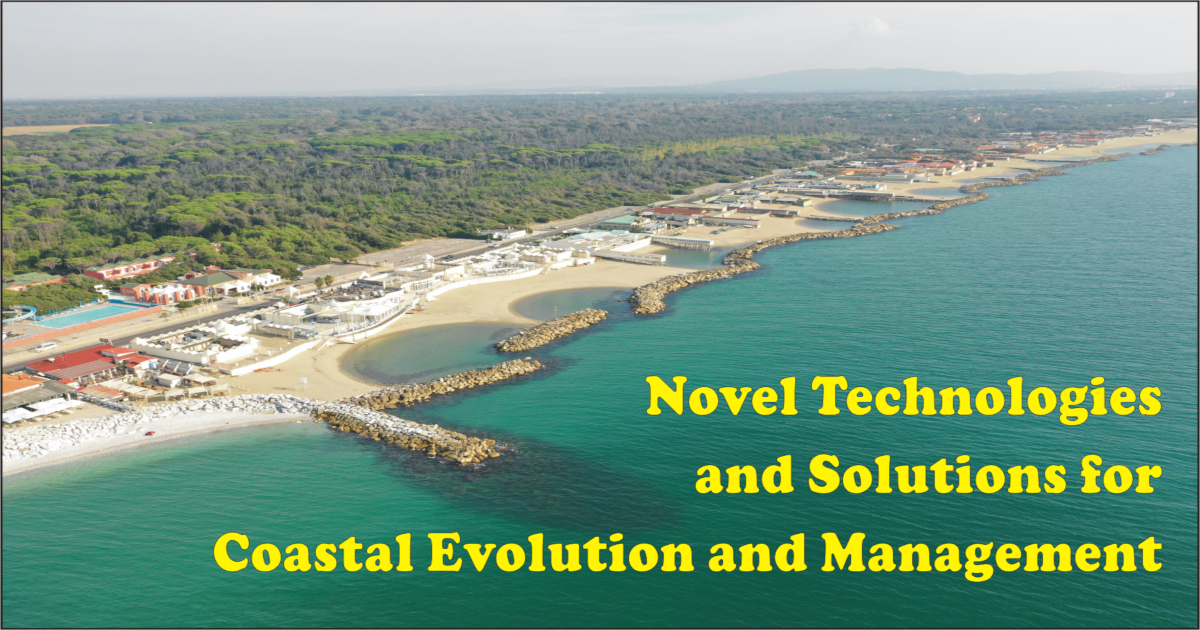Novel Technologies and Solutions for Coastal Evolution and Management
A special issue of Journal of Marine Science and Engineering (ISSN 2077-1312). This special issue belongs to the section "Coastal Engineering".
Deadline for manuscript submissions: closed (10 April 2022) | Viewed by 19190

Special Issue Editors
Interests: coastal morphodynamics; strandplain evolution; geoarchaeology; sedimentology; coarse beach; clast RFDI identification
Special Issues, Collections and Topics in MDPI journals
Interests: IoT; LoRaWAN
Special Issues, Collections and Topics in MDPI journals
Special Issue Information
Dear Colleagues,
Coastal areas are in need of continuous specialized studies, especially considering the projections about sea level rise, which predict unsettling scenarios within the next decades. However, the evolution of coasts is the result of many processes, often acting on short temporal scales. Lately, strong attention has been dedicated to approaches to coastal zone management that encourage multidisciplinary studies.
In recent years, several novel technologies have emerged whose roles can be crucial to better understand the processes acting on coastal areas. These include pervasive monitoring systems based on the Internet of Things paradigm as well as remote sensing techniques exploiting drones, and Surface and Underwater vehicles. All these technologies are leading to a more accurate definition of coastal processes.
The purpose of the Special Issue is to publish the most interesting and innovative research about the proposed subjects, providing short turn-around time regarding reviewing and publishing.
High-quality papers related to one of the following topics will be taken into consideration for publication.
- Coastal zone management
- Sediment transport
- Nearshore processes
- Effects of coastal protection structures
- Case studies about best practice implementation
- Remote sensing for coastal areas
- Internet of Things architectures for coastal areas
- Drones and vehicles for coastal monitoring
- Sediment tracing techniques and technologies
- Data analysis tools for coast management
Dr. Duccio Bertoni
Dr. Alessandro Pozzebon
Guest Editors
Manuscript Submission Information
Manuscripts should be submitted online at www.mdpi.com by registering and logging in to this website. Once you are registered, click here to go to the submission form. Manuscripts can be submitted until the deadline. All submissions that pass pre-check are peer-reviewed. Accepted papers will be published continuously in the journal (as soon as accepted) and will be listed together on the special issue website. Research articles, review articles as well as short communications are invited. For planned papers, a title and short abstract (about 100 words) can be sent to the Editorial Office for announcement on this website.
Submitted manuscripts should not have been published previously, nor be under consideration for publication elsewhere (except conference proceedings papers). All manuscripts are thoroughly refereed through a single-blind peer-review process. A guide for authors and other relevant information for submission of manuscripts is available on the Instructions for Authors page. Journal of Marine Science and Engineering is an international peer-reviewed open access monthly journal published by MDPI.
Please visit the Instructions for Authors page before submitting a manuscript. The Article Processing Charge (APC) for publication in this open access journal is 2600 CHF (Swiss Francs). Submitted papers should be well formatted and use good English. Authors may use MDPI's English editing service prior to publication or during author revisions.
Keywords
- Coastal zone management
- Sediment transport
- Nearshore processes
- Coastal protection
- Modelling
- Drones
- Surface Vehicles
- Underwater vehicles
- Internet of Things
- Sediment tracing






